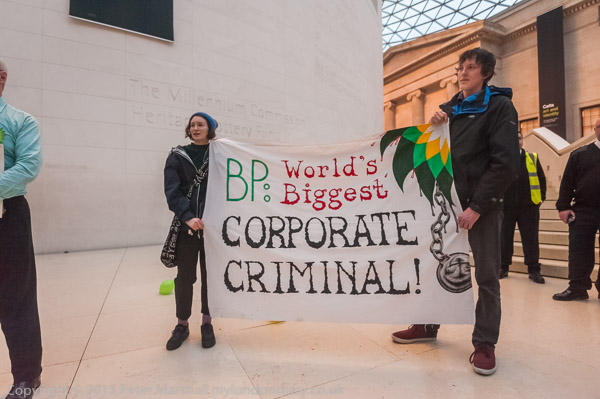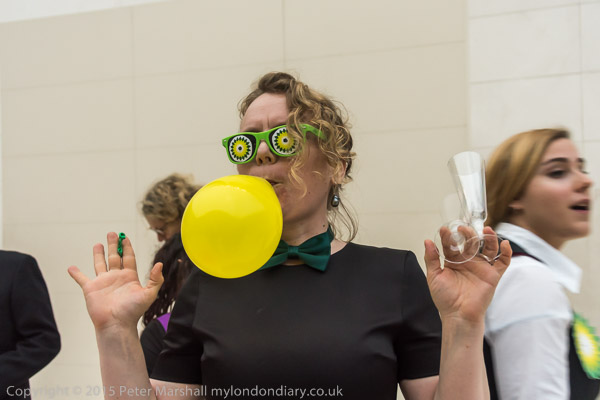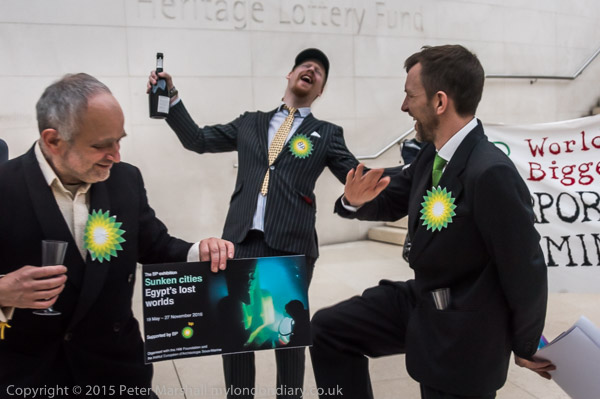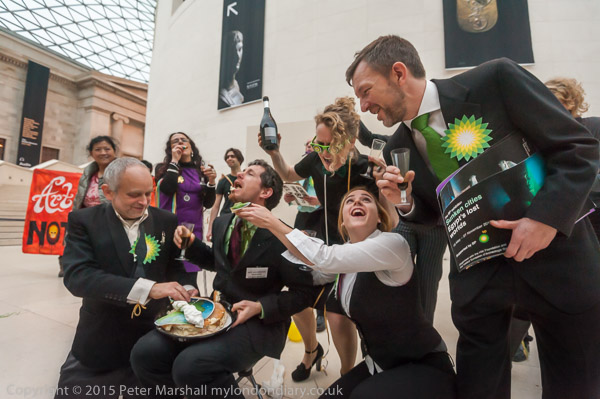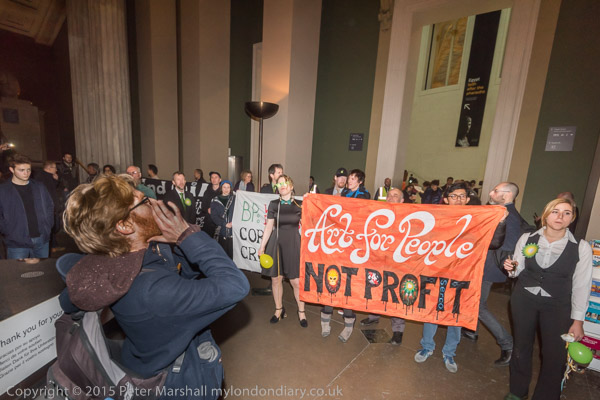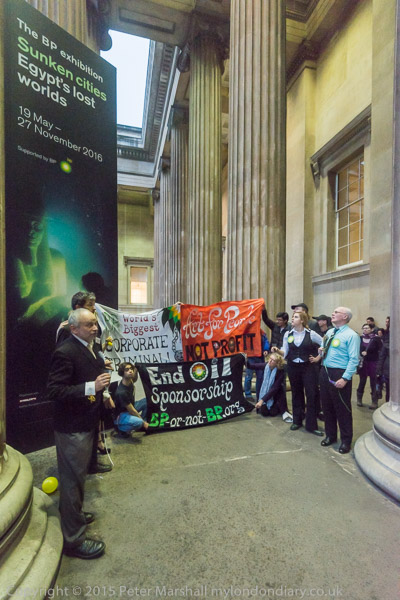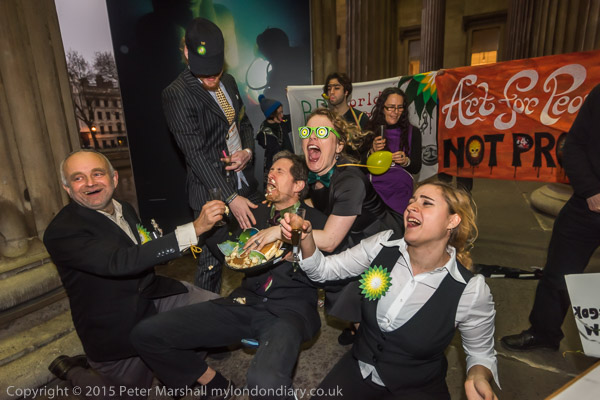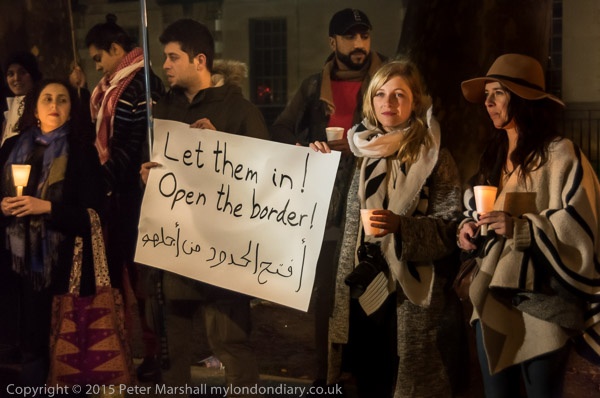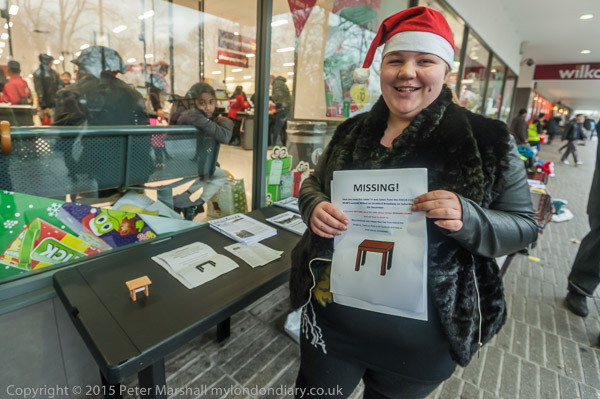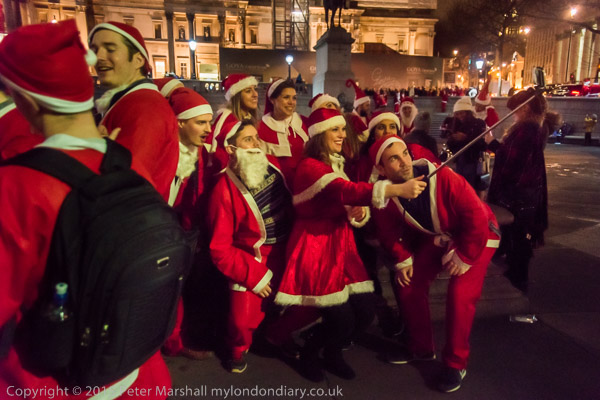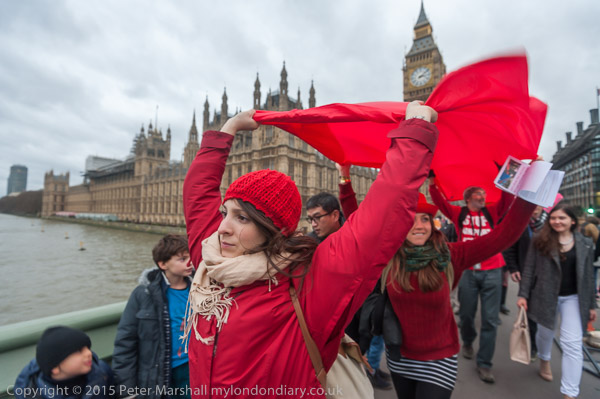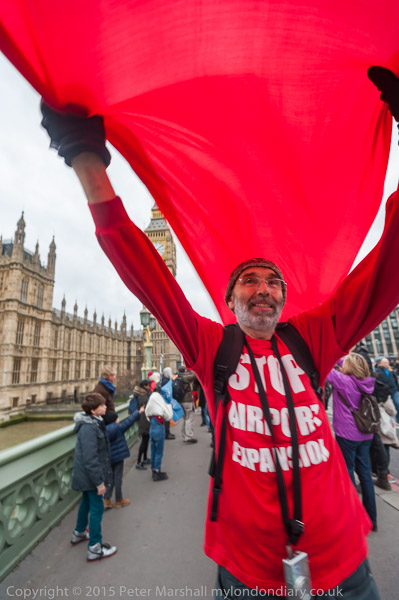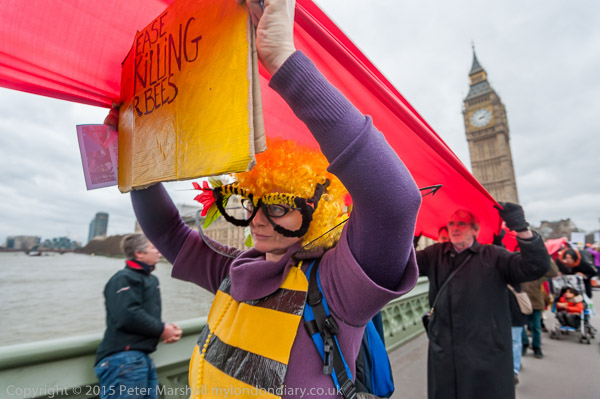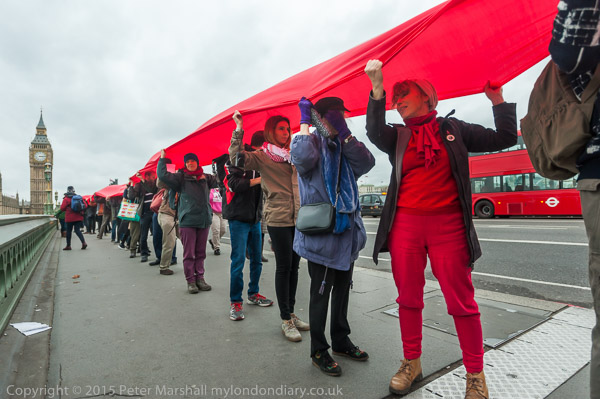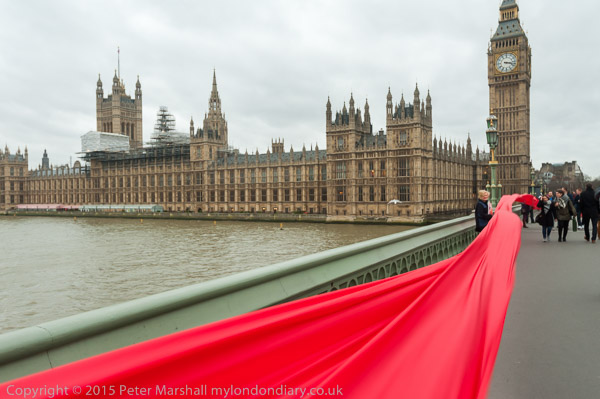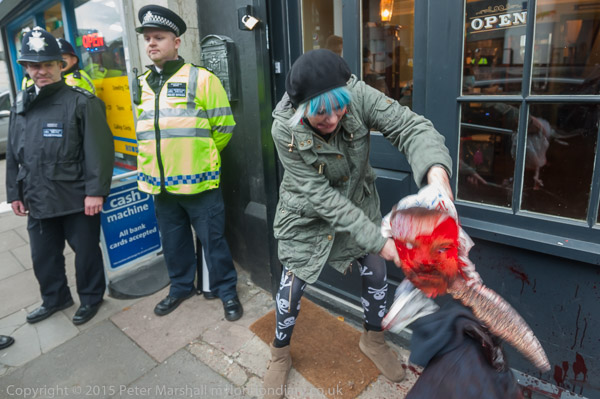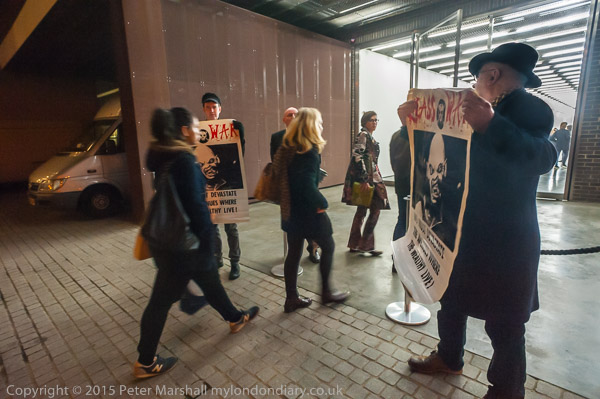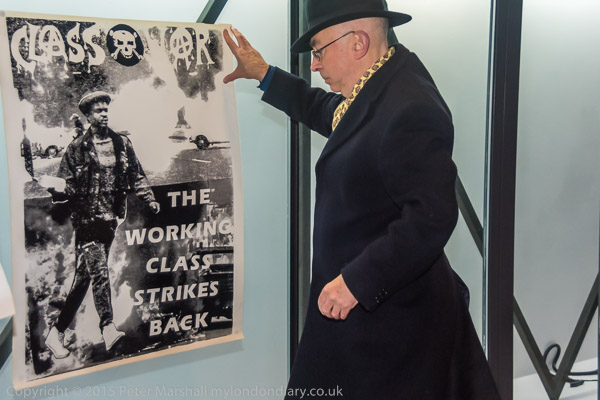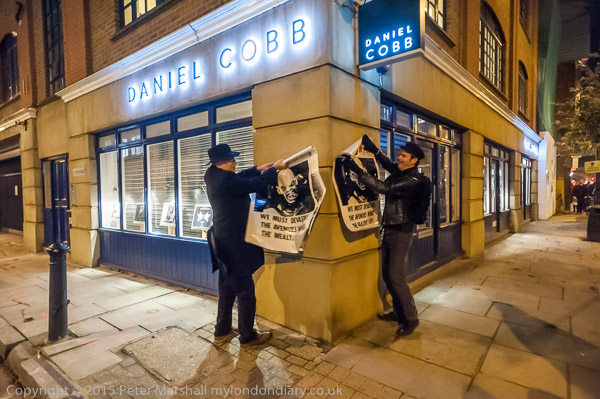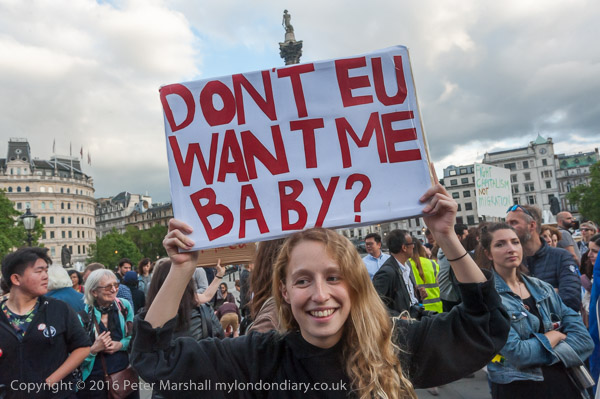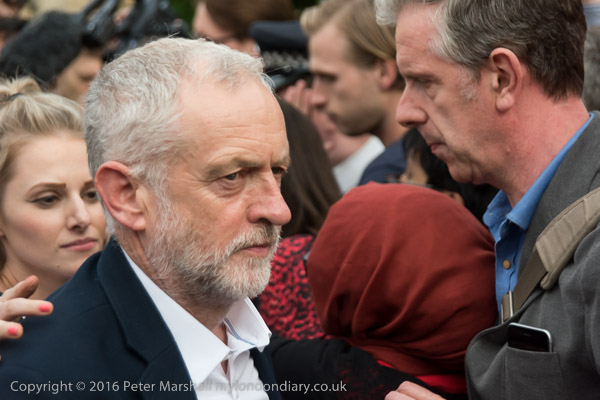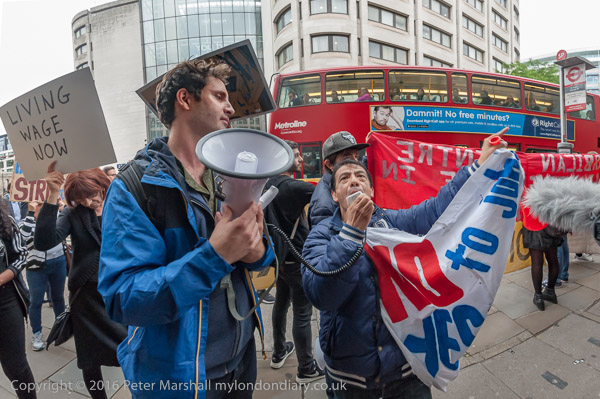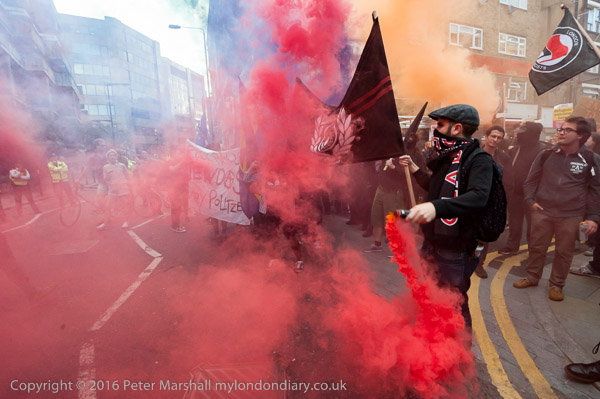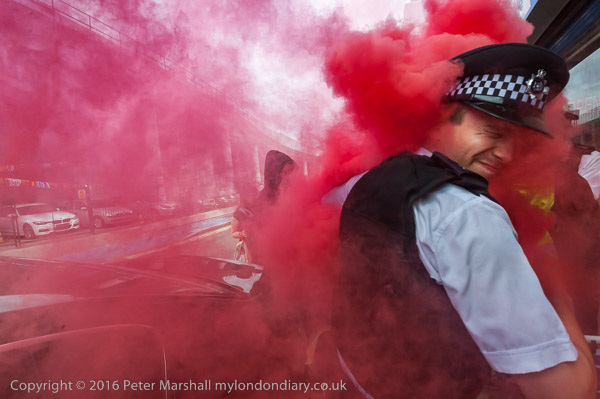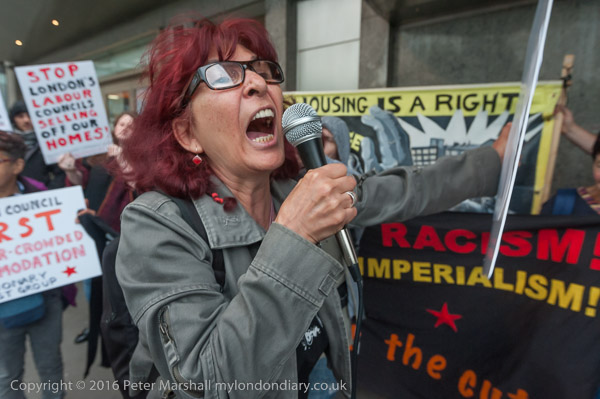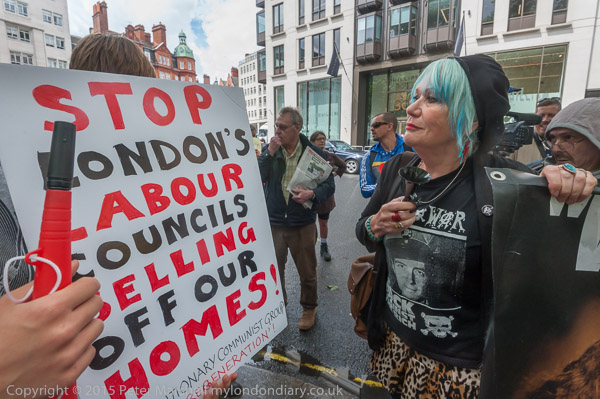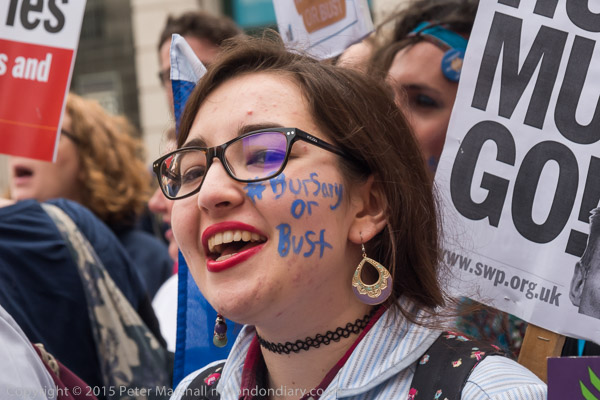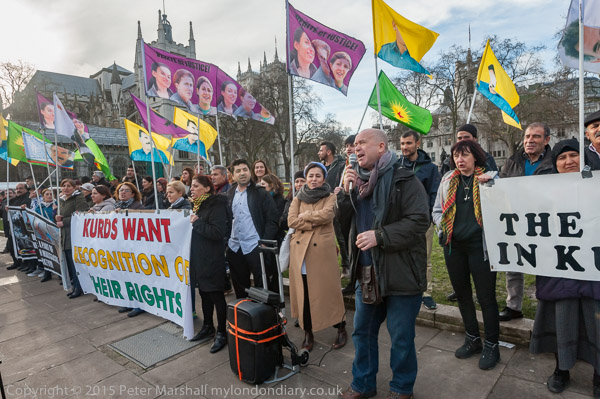
I don’t think I made any resolutions at the start of this year, though I was hoping to take things a little easier. I was also suffering from toothache, which isn’t something that makes for clear thinking. Toothache almost always seems to strike when there is little chance of seeing a dentist for some days – perhaps because holidays put more stress on teeth, and I went back to work on the same day as my dentist, after an early morning appointment had done something to ease my pain and started me on a course of antibiotics.
I wasn’t feeling at my best, and was not happy at my dentist’s verdict that one tooth was beyond redemption and a second might be saved, but only by expensive specialist treatment (and two weeks later I heard the bad news that the specialist dentist had studied the X-rays and advised that extraction was best for that tooth too.)
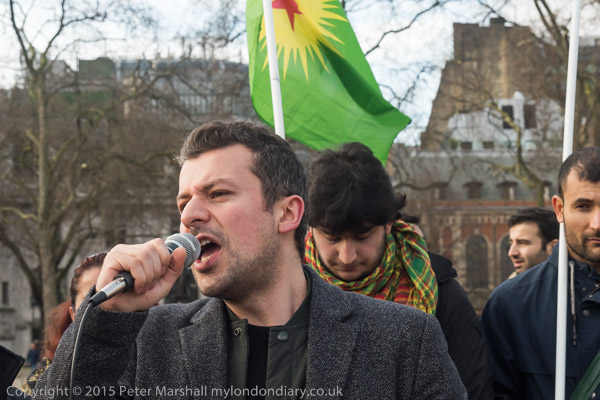
Going out to take pictures at least took my mind off of my teeth, and reminded me that worse things go on in the world. Not least in Turkey, where the Kurdish population was increasingly coming under attack by Turkish military, and across the border in Syria, where Turkey was aiding Da’esh (aka ISIS/ISIL/IS) to attack Kurds there. In my introduction to Kurds protest Turkish army killings I’ve tried to provide some basics about the very murky situation involving ISIS oil, Turkey, the PKK (Kurdistan Workers Party), Russia, Israel, the CIA etc., though of course nearly every account in the press or on the web is an attempt to mislead rather than clarify.

Kurds call for release of Abdullah Ocalan, 1999
We’ve seen recently more of what President Erdogan is capable of, and his clampdown on the opposition and press freedom in Turkey, but this is a long-running issue, with the Kurds suffering long before he founded the AKP and brought it to power in 2002. I first remember photographing them in London in 1999, after the Turks with CIA help captured and imprisoned the Kurdish leader Abdullah Ocalan.
I’d come to Westminster to photograph another protest when I came across the Kurds in Parliament Square. Because I was on my way elsewhere I didn’t go with them from the square to the Conservative Party headquarters where they went to deliver their letter. There they walked into the foyer and occupied it and the steps outside for several hours, which put their protest into the newspapers and TV. Peaceful protests that don’t involve such direct action are seldom treated as news by mainstream media, even when they involve thousands or tens of thousands of campaigners.
Ocalan is still in prison in Turkey, and is still regarded by many Kurds both inside and outside Turkey as their great nationalist leader. It looked for a while as if there might be peace made between Turkey and the Kurds, and in June last year a pro-Kurdish party gained a considerable presence in the Turkish parliament, pursuing their aims by democratic means. But later in the year Erdogan called another election, in which many of these seats were lost, and military attacks against the Kurds increased.
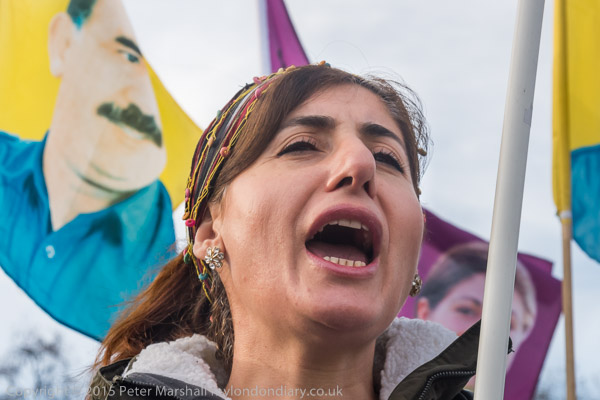
Teeth sometimes seem to feature rather prominently in my pictures which often show people shouting, and there were some good sets on display at this protest. Things can look even worse on occasions when I use fill-flash, which tends to light up the inside of people’s mouths in a sometimes alarming way – and often calls for a little local burning in with Lightroom’s adjustment tool.
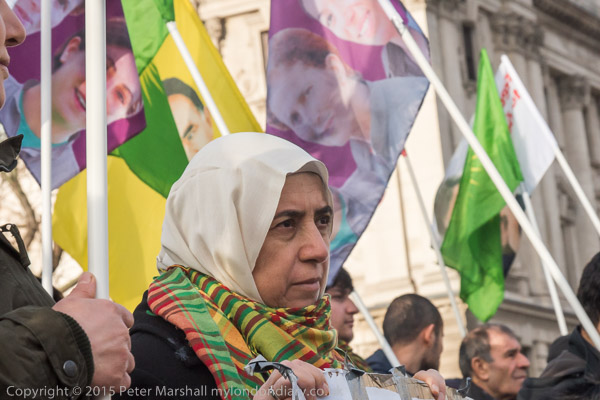
My parents were still of the generation where those who could afford it had all their own teeth removed, and a ‘full set’ of false teeth, often as a 21st birthday present or a wedding gift to each other. On each side of the marriage bed in many working class households you would find a ‘toothmug’ or ‘toothglass’ in which these lay overnight, often soaking in a mild antiseptic cleaning solution.
Things had moved on a little by the time I had teeth and we had a National Health Service, though dentists managed to keep out of the free provision, retaining charges. There was however a ‘School Dental Service’, which was free, but at least at my local clinic, extremely off-putting and rather basic, and which only operated up to school-leaving age. They filled some, pulled others, told you not to eat sweets and that was it.
When my own children came, they went to an NHS dentist and we were fortunate to have an excellent one, who looked after them and sent them on when necessary to an NHS orthodontist, something unheard of in my youth.
And of course there have been advances in dentistry that have helped us all, and made time spent at the dentists generally almost pain-free. Though as I was to find later in the month and those following, after an extraction it can be a long and painful healing process. And of course there are still so many treatments not available on the NHS, and even NHS treatment is now priced beyond the means of many, with even the simplest filling coming as a Band 2 treatment at over £50 – though some still qualify for free treatment. Others find ways of self-treatment with superglue from the Pound shop and pulling teeth the old ways – which don’t bear thinking about.
Continue reading Teeth and Kurds
